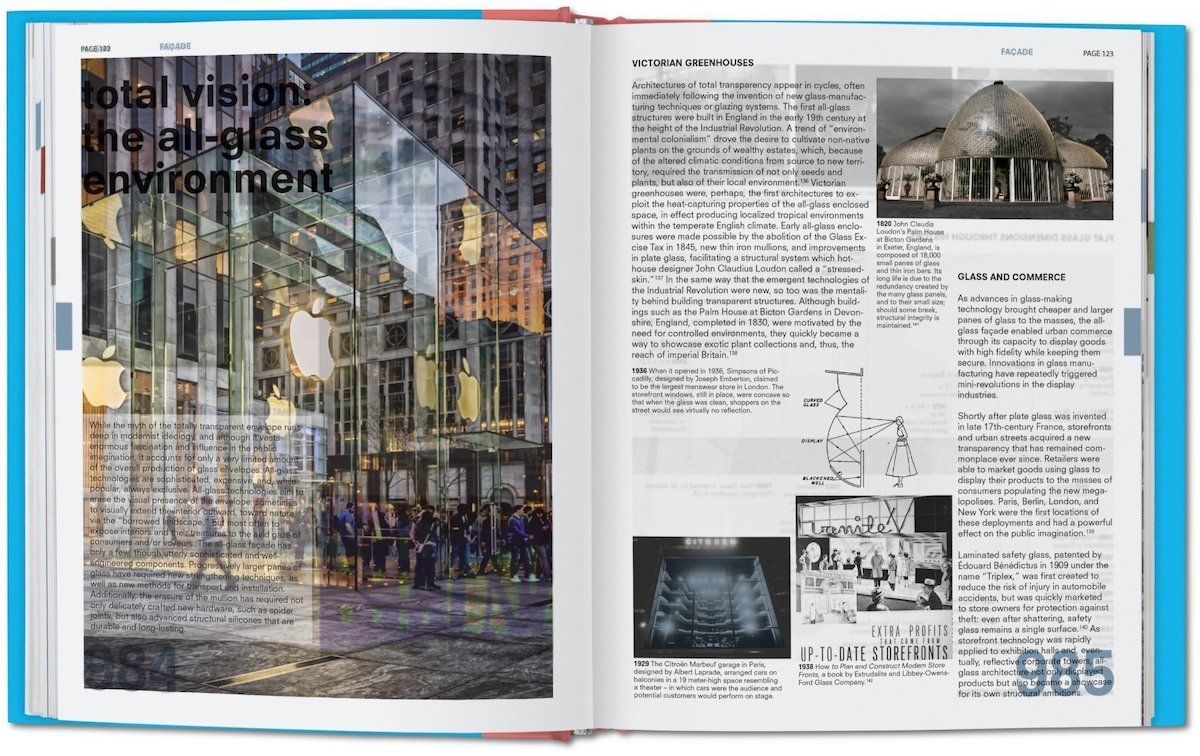


Like Umberto Eco, Georges Perec and Jorge Luis Borges I am a sucker for lists, lexicons, archives and wunderkammers. Lists are a means of creating order within the infinity of possibilities. They are an attempt to grasp the incomprehensible. Unlike a definition, which seeks to describe the essence of an object or event, a list describes its traits, features, attributes, qualities, dispositions, capacities, idiosyncrasies, manners, tendencies and so on and thereby makes it understandable and tangible. As Umberto Eco said on the occasion of an exhibition about lists at the Louvre, which he curated, we like things that seem limitless, we like lists because we don't want to die.
Rem Koolhaas, too, loves lists, as will be clear from books such as S, M, L, XL, Content, Al Manakh and the Harvard Guide to Shopping. Elements of Architecture is his latest and most encyclopaedic project. Coming in at more than 2,500 pages and weighing almost 4 kilogram, Elements of Architecture takes bigness to another level.
Elements of Architecture is a revised and expanded edition of the catalogue of the 2014 Venice Architecture Biennale curated by Rem Koolhaas and draws on research by two Harvard Graduate School of Design studios. It is a truly wonderful book. So far I have only perused it. I plan to systematically browse it, section by section and page by page, but not in numerical order, of course.
The book is divided into 15 sections, each of which covers the multiple ways in which an architectural element such as window, stair, wall, ceiling and floor, has been conceptualised throughout history and across geography. This makes the book a real treasure trove. The writing style is matter of fact and slightly ironic, making it a joy to read.
The book was designed by Dutch graphic designer Irma Boom, who is best known for her book designs. The book is printed on the kind of paper that telephone directories used to be printed on to limit their size and that is still used for medicine information leaflets. The spline splits in the middle so that every page falls flat despite the book's thickness. The introduction sits in the middle or the centre of the book. Each page has two numbers, one corresponds to the ‘element’ and one refers to its place in the book as a whole.
But why a book and not a website with a searchable database you may wonder? The problem with web design is that the technology is still very much in flux and needs to be constantly upgraded. Twenty years from now you can still read a book, just as you can still browse 1995's S, M, L, XL today, but what will the internet look like twenty or fifty years from now?
Links
Review of Rem Koolhaas|OMA: Content (the book)
Review of OMA|Rem Koolhaas: Content (the exhibition)
Architecture and Urban Planning in China. A Lecture by Rem Koolhaas.
Review of OMA in The Hague.